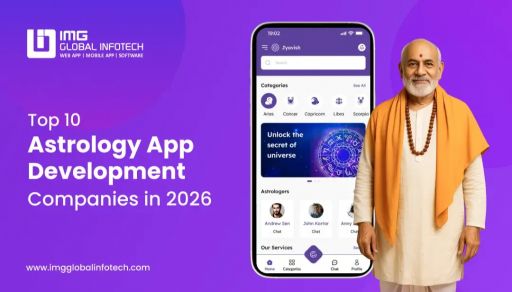Lyft Clone App Development: A Complete Guide
Lokesh Saini
Sep 18, 2025

The on-demand ride-hailing industry has grown exponentially in the past few years, led by companies like Lyft and Uber. These taxi booking platforms have not only changed the way people commute but have also opened up lucrative opportunities for startups and businesses. If you're looking to create a taxi-booking app like Uber, a Lyft clone app is the ideal place to start. In this guide, we’ll walk you through everything you need to know for lyft clone app development, from features to cost to launching a successful Lyft-style ride-sharing platform.
What is a Lyft Clone App?
A Lyft clone app is a ready-made or custom-developed mobile application designed to replicate the core functionalities of Lyft. It includes apps for passengers and drivers, along with an admin panel to manage everything from rides to payments. These taxi booking apps like Lyft are tailored to help you launch your own branded ride-hailing app quickly without starting from scratch.
Rather than simply copying Lyft, a clone app gives you a framework to build upon, allowing for customization, scalability, and new feature integration according to your target market’s specific needs.
Features of a Ride-Hailing App Like Lyft
The features of a Lyft clone app development are designed to offer seamless and efficient experiences for both passengers and drivers.
For Passengers:
-
User Registration & Login
Simple and secure sign-up options using email, phone number, or social logins like Google and Facebook.
-
Ride Booking Interface
Users can book a ride instantly by setting pick-up and drop-off locations, choosing the vehicle type, and confirming the ride.
-
Real-Time Ride Tracking
Live GPS tracking allows passengers to monitor the driver's location and estimated time of arrival (ETA).
-
Multiple Payment Options
Supports various payment methods including credit/debit cards, digital wallets, UPI, and even cash.
-
Trip History & Receipts
Apps like lyft allow passengers to view past trips, fare details, and download invoices.
-
Ratings & Reviews
After each ride, users can rate the driver and provide feedback to maintain service quality.
For Drivers:
-
Driver Profile & Verification
Drivers can sign up by submitting necessary documents for verification through the admin panel.
-
Trip Requests & Navigation
Lyft-like app development has built-in GPS and map integration to guide drivers to the fastest and most efficient routes.
-
Earnings Dashboard
Drivers can view their daily/weekly earnings, completed rides, and commission details in real-time.
-
Availability Toggle
Ride-hailing apps like lyft allows drivers to go online/offline depending on their availability to accept rides.
-
Ratings & Feedback
Encourages better service by letting passengers rate drivers, and vice versa.
Admin Panel:
-
Dashboard Overview
Centralized control panel to monitor real-time activities, including active rides, users, and driver performance.
-
User & Driver Management
Admins can add, remove, or block users and drivers, and verify driver documentation.
-
Trip Management
View completed trips, manage cancellations, set pricing structures, and apply surge pricing.
-
Earnings & Commission Control
Track total revenue, commission earned, payouts to drivers, and overall financial health of the platform.
-
Promo Codes and Offers
Launch discounts, referral programs, and promotional campaigns to attract and retain users.
Advanced Features of Lyft Clone App to Enhance User Experience
To stay competitive in the crowded ride-hailing market, it's essential to integrate advanced features that elevate the user experience.
-
In-App Chat & Support: Enables passengers and drivers to communicate within the app.
-
Ride Scheduling: Lets users pre-book a ride for later.
-
Live Location Sharing: Boosts safety by allowing riders to share their location in real-time.
-
Wallet Integration & Promo Codes: Offers seamless payments and user retention through discounts.
-
SOS Button: Provides emergency assistance for enhanced safety.
-
AI-Based Fare Prediction: AI app development Suggests fair pricing based on traffic, distance, and demand
Step-by-Step Lyft Clone App Development Process
Lyft clone app development involves a well-structured approach to ensure that the final product is user-friendly, feature-rich, and scalable. Here’s a step-by-step guide to help you get started:
Market Research & Requirement Analysis
Before diving into lyft like app development, it’s crucial to conduct thorough market research. Understand your target audience, analyze competitors, and identify unique features that will set your lyft like app apart. This step will help define the scope of the app and ensure it aligns with market needs.
UI/UX Design
The design of the app plays a significant role in user retention. Focus on creating an intuitive, visually appealing, and easy-to-navigate interface for both riders and drivers. Ensure the design is mobile-responsive and optimized for all screen sizes. User experience should be at the forefront to keep users engaged.
Backend & Frontend Development
The backend involves setting up servers, databases, APIs, and integration of third-party services such as payment gateways, maps, and notifications. On the frontend, the user interface (UI) and user experience (UX) are implemented. Both sides need to be robust and scalable to support future growth.
API Integration
For a fully functional ride-sharing app development, integrating APIs is essential. This includes Google Maps API for location tracking, payment gateway APIs for secure transactions, and SMS/email notification APIs for real-time updates. These integrations ensure a smooth user experience and operational efficiency.
Testing & Quality Assurance
Once the Lyft like app development is complete, comprehensive testing is crucial to ensure that the app is bug-free and functions as expected. Perform rigorous tests on different devices and OS versions to check for performance, security, and usability issues. It’s essential to identify and fix any glitches to ensure a seamless user experience.
Launch & Deployment
After successful testing, deploy the app on both Android and iOS platforms through Google Play Store and Apple App Store. Ensure that your lyft app meets all the platform-specific guidelines to avoid rejection. You may also need to focus on creating a marketing strategy to generate buzz for your app launch.
Maintenance & Updates
Post-launch maintenance is essential to keep the app running smoothly. Regular updates, bug fixes, security patches, and the addition of new features will keep the app relevant and engaging. Listening to user feedback and continuously improving the app’s functionality can help maintain a loyal user base.
How Much Does it Cost to Develop Lyft Clone App?
The cost of developing a Lyft clone app varies significantly depending on several factors, including the complexity of the app, the features you wish to incorporate, the development team's location, and the platforms you intend to launch on (iOS, Android, or both). Below is an overview of the key factors influencing the overall cost:
Features and Functionality
The number and complexity of features you want to integrate will have a direct impact on the taxi booking app development cost. Basic features like ride booking, GPS navigation, and payment processing will cost less, while advanced features such as real-time tracking, AI-based fare prediction, in-app chat, and wallet integration will add to the cost.
Design Complexity
A visually appealing, user-friendly design is crucial for user engagement. If you opt for a custom, high-quality UI/UX design, it will cost more than using pre-designed templates. Custom designs that align with your branding and offer a seamless experience across platforms require more time and expertise from design professionals, thus adding to the app development cost.
Platform and Technology Stack
Whether you choose lyft like taxi booking app development for iOS and Android or a cross-platform app (using frameworks like Flutter or React Native) will influence the development cost. Native apps are usually more expensive to develop since they require separate codebases for each platform. Additionally, the choice of technology stack for both frontend and backend (e.g., React Native, Node.js, Firebase) can impact the pricing based on the expertise required.
Development Team Location
The location of the software development team for hire plays a significant role in determining the cost. Developers in North America and Europe typically charge higher rates than those in countries like India, the Philippines, or Eastern Europe. While outsourcing to regions with lower labor costs may reduce your budget, it’s important to ensure that quality is not compromised.
App Maintenance and Updates
Once the app is launched, ongoing maintenance and updates are required to ensure the app remains secure, bug-free, and compatible with new OS versions. Maintenance costs typically account for 15-20% of the initial development cost annually, depending on the frequency of updates and enhancements.
Estimated Development Costs of Apps Like Lyft
-
Basic Version: A basic cost to develop a Lyft clone app with standard features could cost anywhere between $15,000 and $30,000.
-
Advanced Version: If you require advanced features like AI-based fare prediction, in-app chat, ride scheduling, and advanced admin functionalities, the cost may rise up to $40,000.
-
Custom Features: For highly tailored functionality, custom branding, and a more complex tech stack, Lyft-like development costs can exceed $50,000.
Why Choose IMG Global Infotech for Lyft Clone App Development?
When it comes to developing a feature-rich, scalable, and market-ready Lyft clone app, choosing the right taxi booking app development company in India is critical to your success. IMG Global Infotech stands out as a trusted name in web and mobile app development, with a proven track record of delivering high-performance, customized solutions for startups and enterprises across the globe. With our Lyft clone app development services, you're not just getting an app, you're getting a powerful tool to compete in a fast-evolving market.
Conclusion
Building a Lyft clone app is a smart move for entrepreneurs and businesses aiming to tap into the ever-growing demand for on-demand app development services. With the right blend of user-friendly features, advanced functionalities, and a solid development strategy, you can create a ride-hailing app like hala taxi that not only rivals established platforms but also caters specifically to your target audience. Whether you're launching a local cab booking service or planning to scale globally, a well-developed Lyft clone app can position your brand for long-term success in the competitive mobility market.
Lokesh Kumar is the Digital Marketing Manager & SEO Content Strategist at IMG Global Infotech, a top-rated Web & Mobile App Development Company. With extensive experience in digital marketing, SEO, and content strategy, he specializes in boosting online visibility and driving organic growth for startups, SMEs, and global brands. Lokesh is passionate about creating SEO-friendly, user-centric content that not only ranks but also converts. His deep understanding of digital trends and search algorithms helps businesses thrive in a competitive online space.












